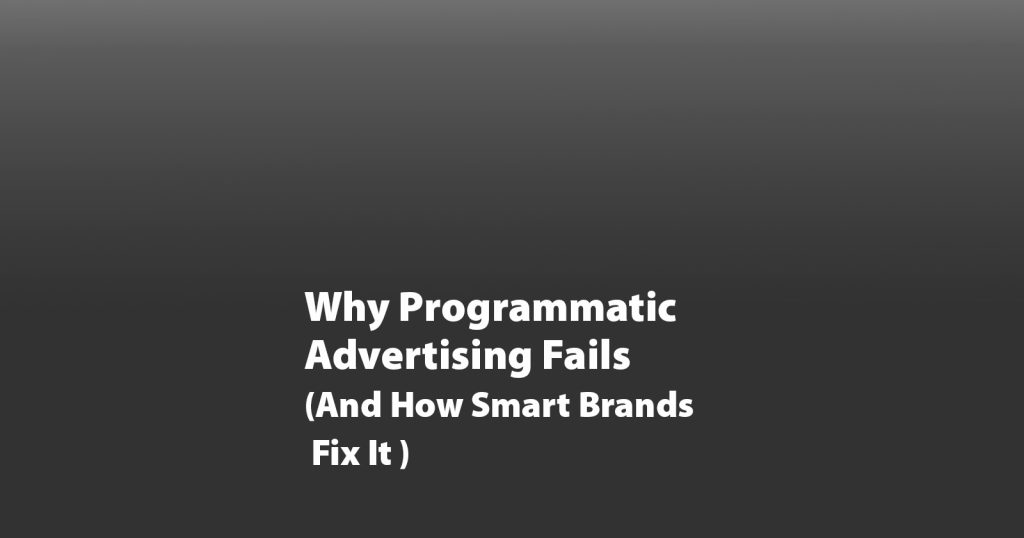
The Revolutionary Ad Creative Formula That 10x’d Click-Through Rates
A Strategic Guide
In today’s fiercely competitive digital landscape, creating advertisements that capture attention and drive engagement is more crucial than ever. At Skymattix, we have perfected an ad creative formula that not only captures attention but also dramatically enhances click-through rates (CTR). This formula, which we call Hook, Agitate, Solve, and Call to Action (CTA), has proven to increase our clients’ CTRs tenfold. In this article, we will delve into each component of this formula, providing you with actionable insights to transform your ad strategy and achieve unprecedented results.
The Importance of a Strong Hook: Capturing Attention Immediately
The first step in our formula is the Hook. In the digital age, where users scroll endlessly through content, catching a viewer’s attention within the first few seconds is imperative. Our approach involves opening with statements that resonate deeply with target audiences, prompting them to pause and engage. For instance, using hooks like, “Struggling to get leads? You’re not alone,” or “Why 80% of ads fail (and how to fix yours),” immediately addresses common frustrations and piques interest.
Agitate: Amplifying the Problem
Once we’ve hooked the audience, the next step is to Agitate. This involves highlighting a pain point that the viewer is likely experiencing. By intensifying this problem, such as stating, “You’re spending thousands on ads and getting pennies in return,” we create a sense of urgency and discomfort around the status quo. This agitation is critical as it prepares the viewer for a solution, making them more receptive to what comes next.
Solve: Introducing a Viable Solution
After the agitation phase, we introduce the Solve. This is where your ad shifts from highlighting problems to offering a clear, compelling solution. For our campaigns, we might say, “With this 3-step method, our clients cut Cost Per Lead (CPL) by 50%.” Here, the focus is on how our unique approach or product directly addresses the pain points established in the previous phases. This not only reassures the audience but also showcases the tangible benefits of our solution.
Call to Action: Driving User Engagement
The final piece of our formula is the Call to Action (CTA). A powerful CTA is direct and tells the viewer exactly what to do next, such as “Click below to see how it works.” The CTA should be clear, compelling, and provide a simple step for the audience to take advantage of the solution offered. It acts as the bridge between the viewer’s heightened interest and the action we want them to take, completing the persuasive process of the ad.
Implementing the HAS-C Framework Effectively
To effectively implement this Hook, Agitate, Solve, and Call to Action framework, it’s crucial to understand your audience deeply. This involves comprehensive market research to tailor each element of the formula to the specific needs and behaviors of your target demographic. Additionally, testing various iterations of your ads will help refine messages and improve engagement rates further.
Examples of Successful Ad Campaigns Using the HAS-C Formula
At Skymattix, we have numerous case studies demonstrating the effectiveness of this formula. For example, in a campaign for a tech client struggling with lead generation, we implemented an ad that began with a powerful hook about industry failure rates, agitated with statistics on wasted marketing budgets, offered a groundbreaking tech solution, and ended with a compelling CTA. The result was a 10x increase in CTR and a significant reduction in CPL.
Optimizing Your Ads for Maximum Impact
Beyond just applying the HAS-C formula, optimizing your ads for visual appeal and message clarity is vital. This includes choosing the right images or videos, writing concise and sharp ad copy, and ensuring that your ads are optimized for various platforms and devices. Continuous A/B testing allows you to compare different versions of your ads to determine which elements most effectively increase engagement and conversions.
Conclusion: Transforming Your Digital Advertising Strategy
By adopting the Hook, Agitate, Solve, and Call to Action formula, businesses can create more engaging, persuasive ads that not only stop the scroll but also convert viewers into customers. At Skymattix, we specialize in crafting customized ad solutions that leverage this proven framework, combined with deep industry knowledge and creative execution, to deliver measurable results. Start transforming your ad strategies today and see your engagement metrics soar.
FAQ's
1.What is the Hook, Agitate, Solve, and Call to Action (HAS-C) formula?
The HAS-C formula is a strategic approach to ad creation that involves four key steps: grabbing the audience’s attention with a compelling Hook, highlighting a problem or pain point through Agitation, presenting a solution in the Solve phase, and ending with a strong Call to Action to spur viewer engagement and conversion.
2. How can the HAS-C formula improve my ad's click-through rate?
By engaging the audience at every step of the viewing process, the HAS-C formula ensures that your ads are not only noticed but that they also resonate deeply with potential customers. This method increases relevance and urgency, significantly boosting the likelihood of clicks and conversions.
3. Can the HAS-C formula be applied to any industry?
Absolutely! While the specifics of the Hook, Agitate, and Solve phases will vary depending on industry specifics and target audience characteristics, the overall framework is adaptable and can be tailored to meet the needs of any sector, whether it's tech, retail, healthcare, or beyond.
4. What are some tips for crafting an effective Hook?
An effective Hook should immediately capture interest and relate directly to the audience's needs or pain points. Use striking statistics, provocative questions, or relatable scenarios to grab attention quickly. Keeping it concise and impactful is key to stopping the scroll.
5. What should I include in the Call to Action?
Your Call to Action should be clear, concise, and tell the audience exactly what you want them to do next. Whether it’s visiting a website, signing up for a newsletter, or watching a demo, make sure it is straightforward and linked directly to the solution you are offering.
6. How can I measure the success of my ads using the HAS-C formula?
Success measurement can be tracked through key performance indicators such as click-through rates, conversion rates, and overall return on ad spend (ROAS). A/B testing different elements of your ads can also provide insights into what resonates best with your audience and what aspects might need tweaking.



